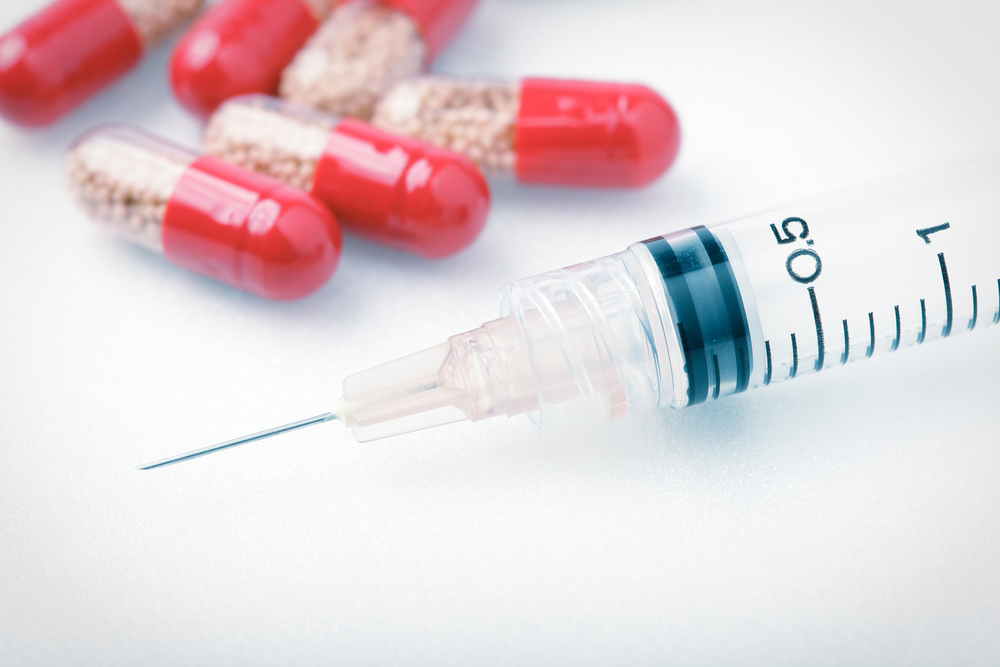Results from a recent study published in the BMJ journal showed that initial treatment with subcutaneous methotrexate is associated with lower rates of treatment changes, no difference in toxicity and some improvements in disease control versus oral methotrexate over the first year in patients with early rheumatoid arthritis (ERA).
Rheumatoid arthritis (RA) is a chronic systemic inflammatory disease that affects about 1% of the population. It leads to irreversible joint damage and systemic complications, and the age-adjusted mortality of those affected exceeds that of the general population
Methotrexate (MTX) is the standard treatment for rheumatoid arthritis (RA) with an established long-term safety profile and improved survival over time relative to other disease modifying anti-rheumatic drugs (DMARDs). The use of this drug in the treatment of RA has evolved over time, with early trials and healthcare providers starting with low doses (5–7.5 mg/week) and eventually escalating using a slow-dose titration.
Absorption of MTX is improved with parenteral (injection of infusion) MTX, particularly at doses >15 mg/week. In a double-blind randomised controlled trial (RCT) that compared oral to parenteral administration, subcutaneous MTX (MTX) (15 mg/week) demonstrated superior efficacy to oral MTX (15 mg/week) but was associated with an increase in withdrawals due to adverse events.
Observational studies of patients who switched from parenteral to oral MTX demonstrated high rates of flares in disease activity, with increased gastrointestinal side effects.
To determine the comparative effectiveness of oral versus subcutaneous methotrexate (MTX) as initial therapy for patients with early rheumatoid arthritis (ERA), in the study titled “The comparative effectiveness of oral versus subcutaneous methotrexate for the treatment of early rheumatoid arthritis”, Dr Vivian P Bykerk from the Hospital for Special Surgery in New York, NY and colleagues conducted a prospective cohort study in 666 ERA patients (417 oral MTX, 249 subcutaneous MTX).
Patients were eligible if they had a diagnosis of ERA according to 2010 American College of Rheumatology (ACR)/ European League Against Rheumatism criteria, symptom duration of ≤1 year, no MTX exposure or minimal exposure before the first three months of study entry (minimal exposure defined as MTX for <4 weeks prior to study entry.
To compared treatment changes due to inefficacy or toxicity along with treatment efficacy, the team used the (Disease Activity Score-28 (DAS-28), DAS-28 remission and Health Assessment Questionnaire-Disability Index (HAQ-DI)).
The results revealed that patients who were prescribed subcutaneous MTX were given a higher dose of MTX (mean dose over first three months 22.3 mg vs 17.2 mg/week). At 1 year of follow-up the results showed that 49% of patients initially treated with subcutaneous MTX had changed treatment compared with 77% of those treated with oral MTX.
Subcutaneous MTX was associated with a lower rate of treatment failure, and most treatment failures were due to inefficacy with no difference in failure due to toxicity. The team also found that subcutaneous MTX was associated with lower average DAS-28 scores and with a small difference in DAS-28 remission. There was no significant difference in sustained remission or HAQ-DI.
Based on these results the researches indicate that whether oral or subcutaneous MTX should be the first treatment choice warrants further study, as there is little evidence to support oral MTX as the preferred route of delivery.


